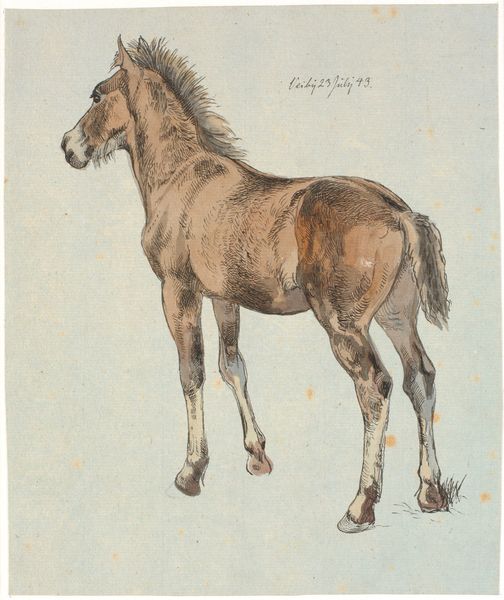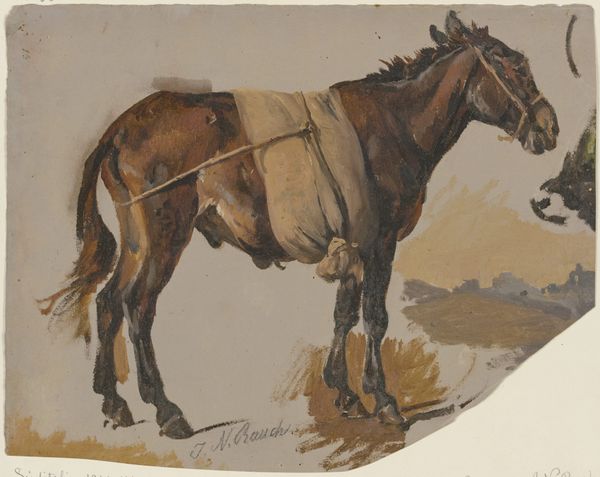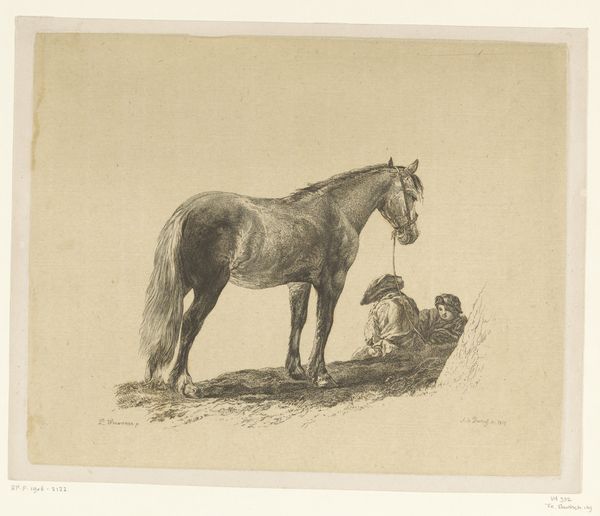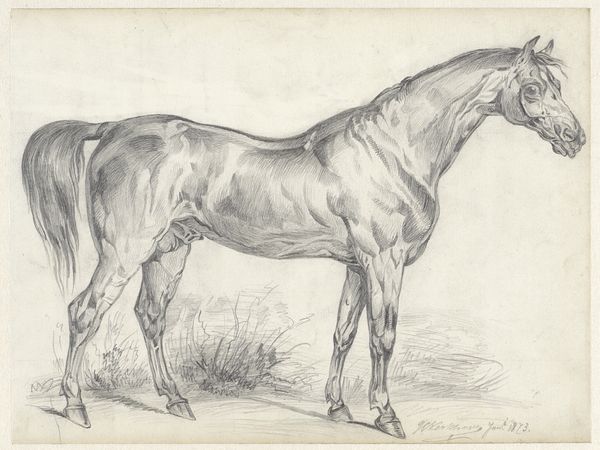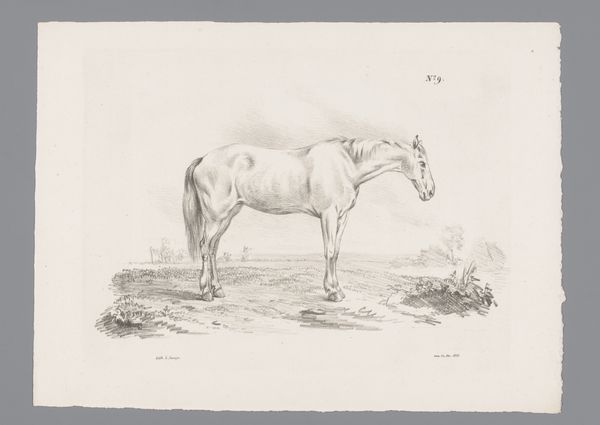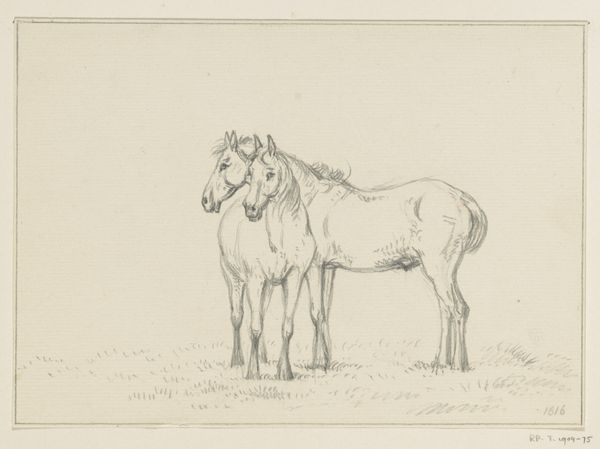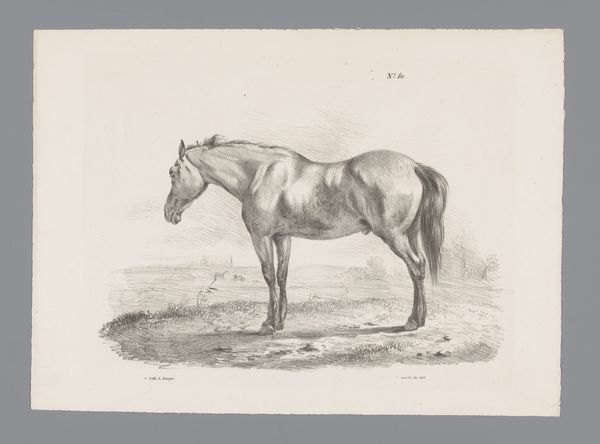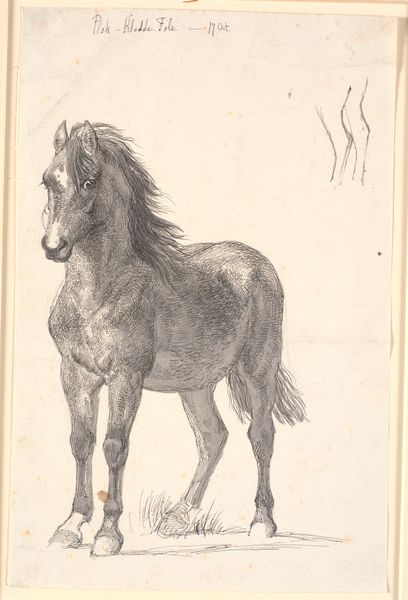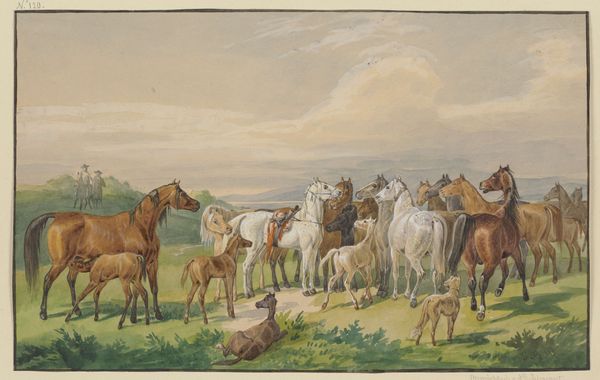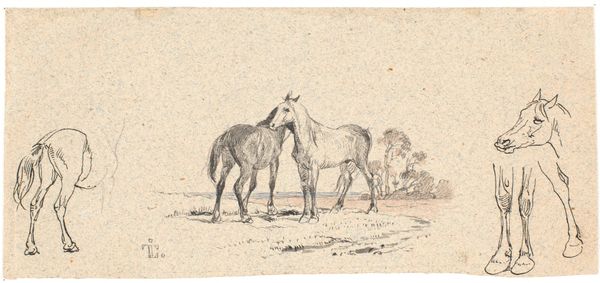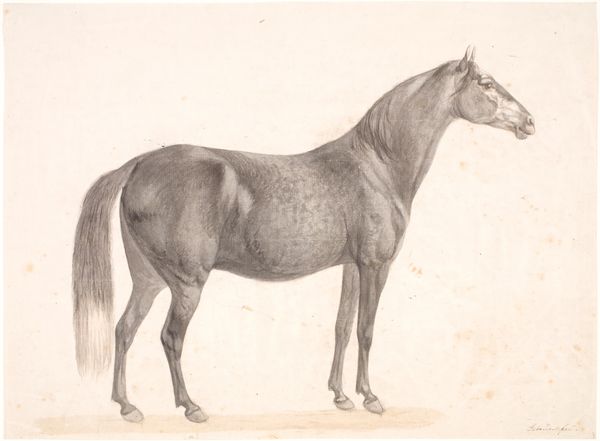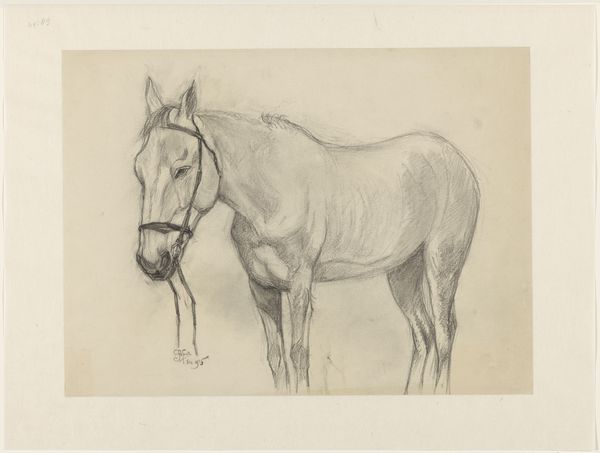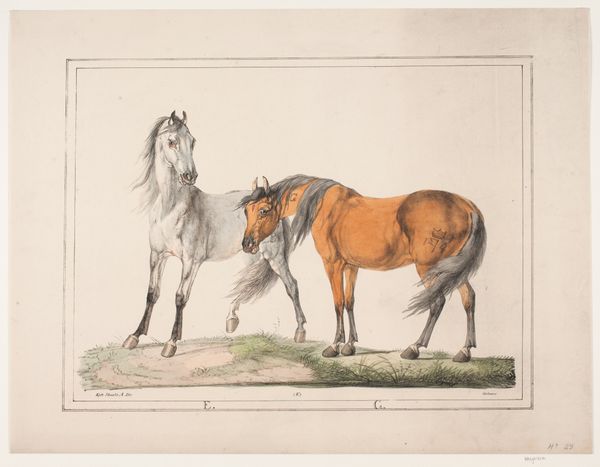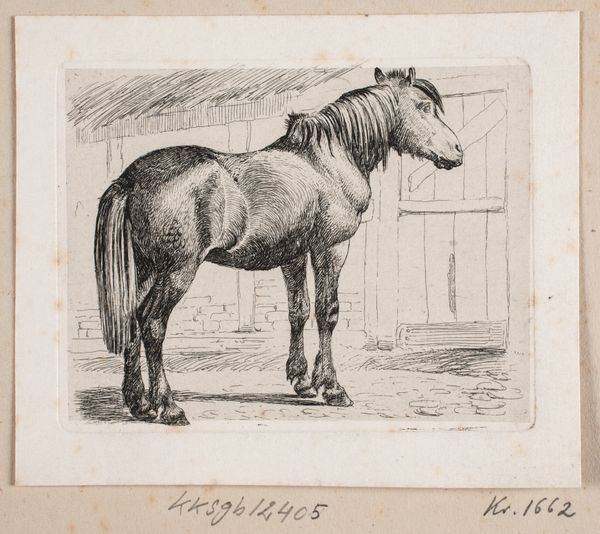
drawing, print, watercolor
#
drawing
# print
#
landscape
#
watercolor
#
horse
#
watercolour illustration
#
watercolor
#
realism
Dimensions: Sheet: 11 15/16 x 16 in. (30.4 x 40.7 cm)
Copyright: Public Domain
Curator: Here we have Victor Adam’s “Mare and Foal,” likely created between 1820 and 1866. Adam worked in watercolor and printmaking. You’ll find it in the Metropolitan Museum of Art’s collection. Editor: It's quite tender. A portrait of mother and child. The neutral tones give it a certain serenity, almost melancholy, punctuated by the dark lines that define the horses and barn. Curator: The positioning of the horses evokes familiar imagery of Madonna and Child, archetypically mirroring protective motherhood and nascent innocence. Adam presents this family within the burgeoning tradition of equine portraiture popular with landowners—the image acting as a material archive of wealth, class and masculinity. Editor: I notice how the barn, fence and sky appear like faded memories—less clearly defined. The horses are solid in contrast. It feels as if Adam wanted to communicate something about what persists in the face of fading social and agricultural structures. Curator: Perhaps Adam is commenting on rural displacement. The industrial revolution created social upheaval, with agrarian populations facing increased precarity. Depicting the mare and foal against a deliberately underdeveloped background raises the possibility of uncertainty, maybe even questioning conventional family stability. Editor: Right, consider that horse imagery appears across different cultures and histories. It usually stands for strength, freedom, even power. Here, the foal is so vulnerable looking. This seems to emphasize fragility instead. Is there something subversive in contrasting idealized animal symbolism with realism, perhaps suggesting a society becoming increasingly distanced from such ideals? Curator: Adam places the scene against the backdrop of radical socio-economic changes. He refigures traditional symbols within a context of potential loss, perhaps expressing some sort of anxiety felt by a patriarchal land-owning demographic. Editor: Reflecting on it, Adam uses recognizable icons in a simple composition to provoke deep emotions concerning transition and perseverance. Curator: Indeed. Looking closer encourages an exploration of animal, human, and social connections at a pivotal moment in European history.
Comments
No comments
Be the first to comment and join the conversation on the ultimate creative platform.
